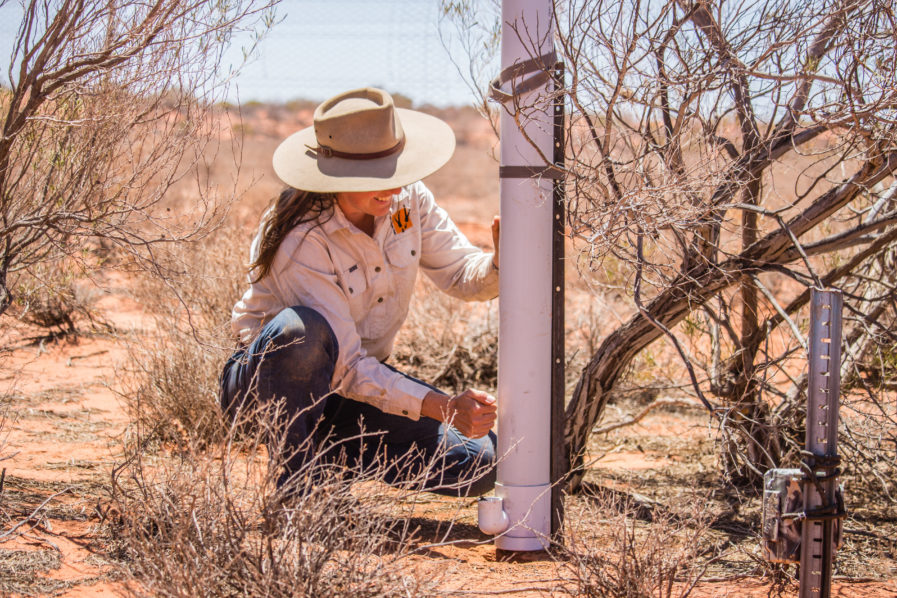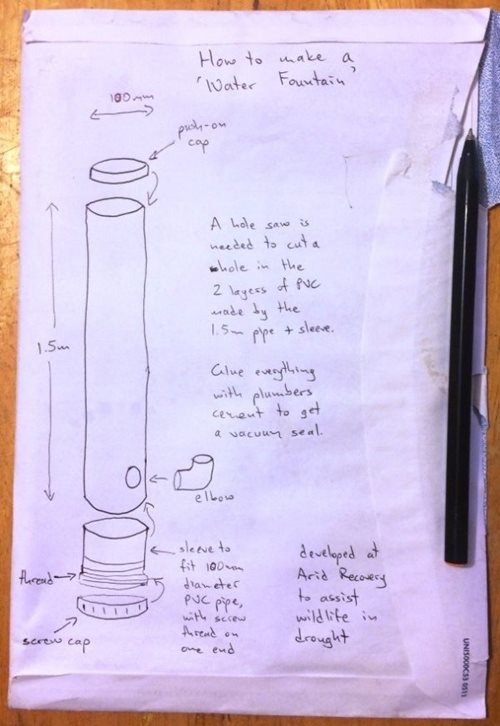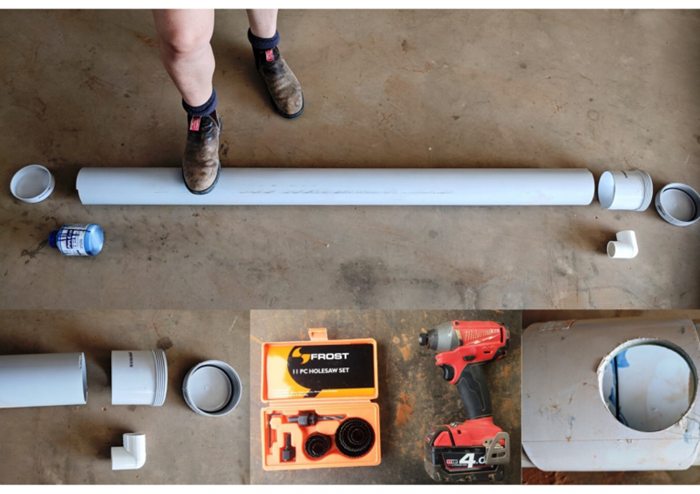How To Make A Water Fountain
Arid Recovery
02 January 2020

To give drought relief to animals at the Arid Recovery Reserve we have been making and putting out ‘water fountains’.
With the awful bushfire crisis raging across the country, there has been a lot of interest in these cheap and simple watering units so we’re sharing instructions on how to make them. These water fountains are not an ‘everyday’ measure. Native animals are adapted to cope with the water sources usually available to them in the landscape or in their food, and it’s usually in the animals’ best interests to leave them to it. But the drought and bushfires make the current conditions extreme in many areas. We have found it necessary to put water out for animals at our reserve, and know we are not alone in facing this.
The fountains work on a basic principle – by having sealed ends on a PVC tube, the water inside is held in a vacuum and only drops as it is drunk or evaporates from the spout. Because it’s just a small amount of water sitting in the spout it evaporates quite slowly. The water in our fountains lasts up to 2 weeks between refills, even in days and days of 40+ degree heat. They can be made from materials readily available at hardware stores and cost under $30 each.


Start with a length of 100 mm diameter PVC pipe. We had them cut into 1.5 m lengths. Use plumbers cement to glue a push-on cap at one end. Fit a threaded sleeve (to suit 100 mm pipe) to the other end and glue it on too. Let that dry, then use a hole saw to cut a 60 mm diameter circular hole at the base, cutting through the now double layer of PVC where the sleeve has been glued on. Take a screw cap to fit the threaded sleeve and glue that on too. Finish by gluing a 60 mm diameter elbow fitting into the hole.
The sleeve is important because the double layer of PVC creates a bigger surface area for the elbow spout to be glued onto securely. It is essential to thoroughly glue both caps on because you need to make an airtight seal to hold the vacuum and stop the water gushing out of the elbow spout.

Fill the water fountain by turning it upside down and pouring water through the elbow spout using a hose or watering can with the rose off. Gently turn it the right way up again and you’ll see that the water holds in the tube thanks to your tight vacuum seal.

It is important to try to place your fountain in amongst some shelter, whether that’s a scrubby thicket, in long grass or under a dense bushy tree. The shade will keep the water cool and slow down evaporation. Perhaps more importantly, the shelter will give animals some protection from predators that might also be attracted to the water.
Fountains can be set up by strapping them to a star picket or tying them to a tree. It’s a good idea to place a small stick or some pebbles in the spout so that any very small animals that fall in can get out again. If you have one, a motion sensitive camera trap placed nearby will give you an idea of what animals are making use of the water. If not, you can look for clues in the tracks and scats that are left behind. Make sure you get permission from the relevant agency or local council before installing water fountains on public land.
All sorts of animals come in to the water fountains that we’ve set up at Arid Recovery – Burrowing Bettongs, Bilbies, Goannas, Small Mammals, Birdlife and even our struggling Stick-nest Rats . You can read more about the impact of the drought in the arid zone here and how we are responding in these blogs: Stick Nest Rats Struggling to Stick It Out or Desperately Dry.

The simple water fountain design was first developed to support stick-nest rats and other animals when they were first reintroduced to the Arid Recovery Reserve 20 years ago. The latest set of water fountains were fine-tuned by our wonderful volunteers Brendan and Maryanne Freeman who travelled over from Victoria to help. Thanks also to the good folks at Mitre 10 Roxby Downs who chipped in ideas and cut lots of pipe for us.
We hope you find this useful in helping critters wherever you are, especially in bushfire affected areas. We’d love to see how you put them to use and what animals come in for a drink
Download a PDF instruction sheet here provided by NSW Department Planning, Industry & Environment : Wildlife Watering Pod